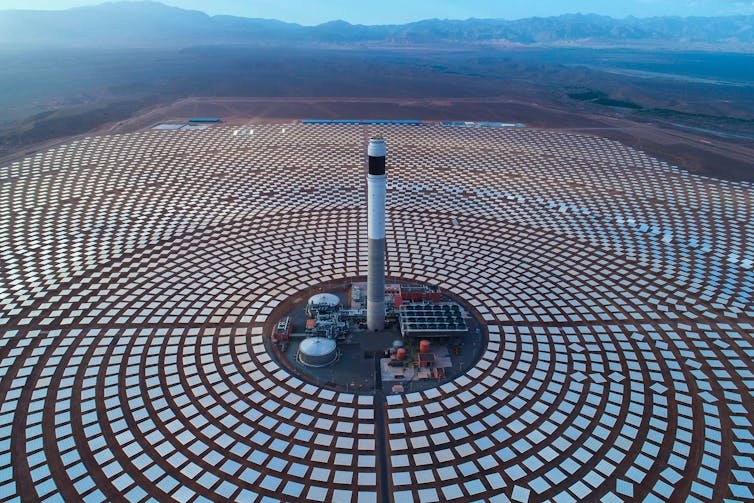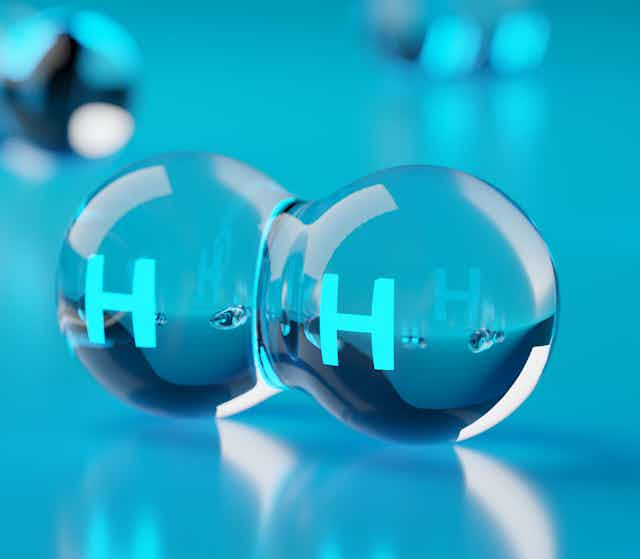“Britain will become the Qatar of hydrogen,” Boris Johnson declared as the government laid out its 368-page strategy for reaching net zero emissions by 2050. It sounds magnificent, but what does it mean in practice?
To meet its net zero targets, the UK needs to convert from an economy that is 80% powered by fossil fuel and 20% electric to one that is 80% electric and 20% “green” hydrogen (produced using renewable power) over the next several decades. Hydrogen is needed to replace fossil fuels for powering industrial sectors such as steel, as well as fuelling heavy transport. Importantly, it is also necessary to replace the huge volumes of “grey” hydrogen manufactured from natural gas that are currently used in fuel and fertiliser manufacture.
In addition, hydrogen has a role to play in heating. All we hear about is the need to install heat pumps, though they are unlikely to be appropriate for flats and many other types of home. The only efficient way to heat such buildings is from a central source of heat, which is unlikely to be a heat pump. The alternative is to convert the natural gas grid to hydrogen for powering combined heat and power installations like they are developing in Japan. The UK government is experimenting with a “hydrogen village” trial, but won’t decide on the role of hydrogen in heating until 2026.
Whatever the government decides about heating, we’ll still need a lot of hydrogen. To make green hydrogen in the UK will require a huge amount of electric power. And this is on top of the fact that the shift to running 80% of the country on electricity is already going to require vastly more power – perhaps two to three times as much as is currently being produced.
Even the grid as it stands still needs to be decarbonised considerably. On average, some 40% of UK electricity is produced using natural gas plus some coal. When wind power fell in September, this dependency increased. Until the UK grid is carbon-free, any green hydrogen produced will only be 60% green – and the same goes for everything else, from electric cars to the power coming into people’s homes.

The UK therefore needs to ensure that enough solar, wind and nuclear power is being generated to negate the need for electricity from fossil fuels. The UK intends to build more generating capacity in the form of offshore wind and solar, but the planning system is unlikely to approve generating on the vast land and sea areas required to cover the entire transition.
Nuclear power is one answer, but it is sufficiently expensive that the government is yet to find a way of attracting many global investors. Seven nuclear power stations provide about 7% of the UK’s energy requirement, with two due to close in 2022 and only one new one going ahead at Hinkley Point in Somerset. This helps to explain why the UK intends to more than triple the amount of power it can import from other countries via interconnectors by 2030.
For the renewable power that it does produce, the UK will also need a large amount of long-duration energy storage for periods when the wind does not blow and the sun does not shine. This will not be lithium-ion batteries, since their storage-durations are not long enough, but, for example, iron flow batteries or nuclear heat-energy stores. The government is making £68 million available for two energy-storage demonstrations, although the UK is far behind the US on this. American companies are already selling these systems.
Who will dominate hydrogen
The UK could still become a leader in converting industrial processes like steel-making and also home heating to hydrogen power. But the reality is that much of the power for producing green hydrogen will come from abroad. Not only that, most of the green hydrogen will probably come from abroad too.
When it comes to generating cheap power and cheap green hydrogen, neither the UK nor other European nations will be able to compete with Saudi Arabia and north African countries like Morocco. These nations can harness considerably more renewable power thanks to the Atlantic trade winds blowing across their coast (north Africa), and have much higher sunshine levels (all of these countries).
Already Saudi Arabia is working on a plan to make electric power very cheaply from sunshine by first converting it to hydrogen and then to ammonia to be shipped to countries including the UK, where it will be converted back to hydrogen.
Morocco already has a massive amount of solar, wind and battery storage. It is now working on using some of this to produce hydrogen to ship to Europe. Meanwhile, there is a plan for an interconnector from Morocco to the UK, with cables due to start being laid in 2025.

Other north African countries have great potential for similar reasons: they have large areas of desert, have almost three times the solar light incidence of Europe, and don’t have issues with planning permission or farmland being taken up by solar panels. Solar and wind power prices in the UK are indeed falling rapidly, but they will not be able to compete with these countries in the long term.
So the UK may yet succeed in its ambition to become “global Britain”, but it is probably going to be leaning heavily on US battery technology, and Saudi and north African hydrogen and clean power. The only way to avoid increasing the UK’s energy dependency on other countries would be at a huge cost to consumers. It is one thing to come out with eye-catching slogans about becoming a world force in hydrogen, but the reality is going to be somewhat different.

